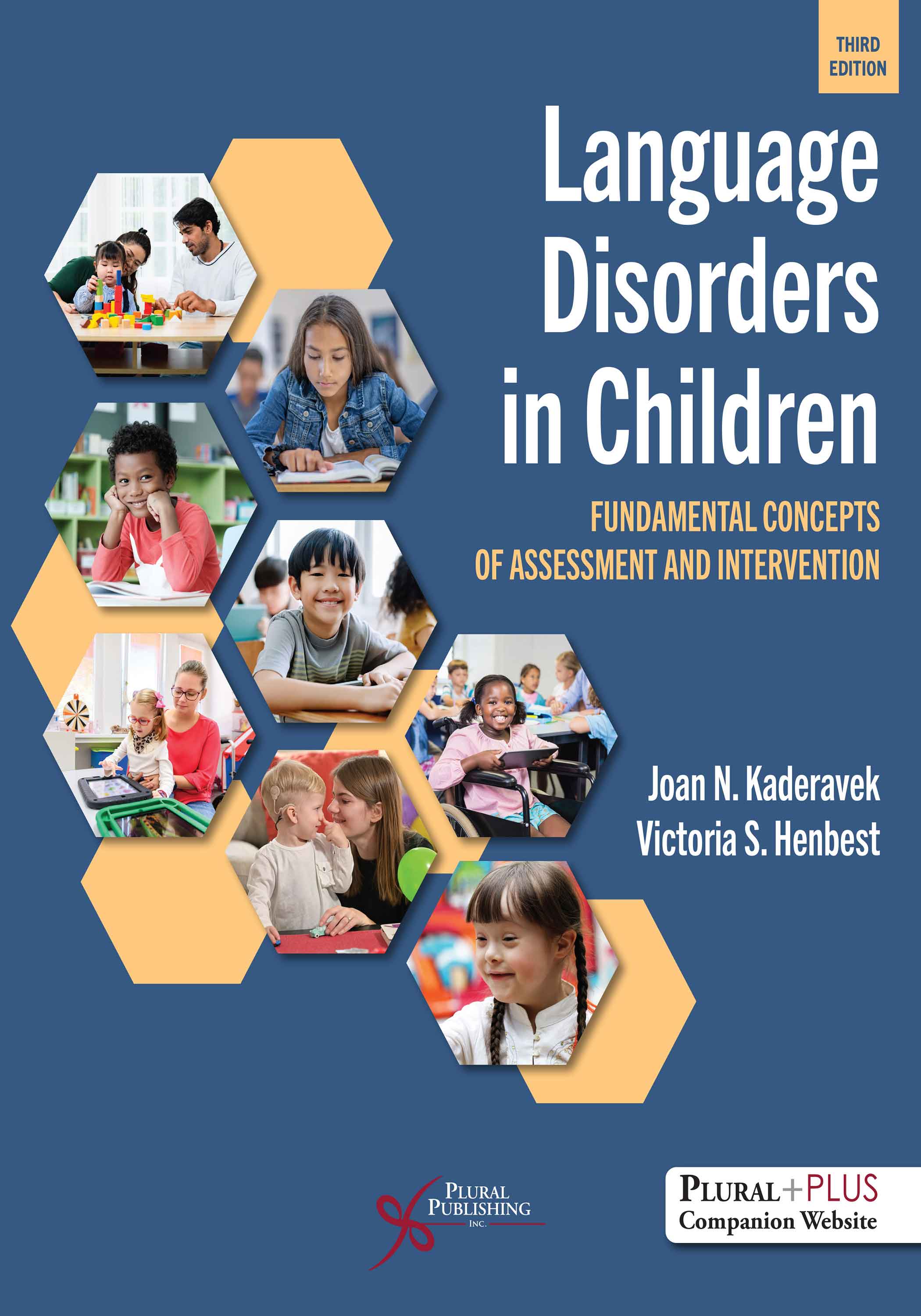
Language Disorders in Children: Fundamental Concepts of Assessment and Intervention
Third Edition
Joan N. Kaderavek, Victoria S. Henbest
Details: 454 pages, 2-Color, Softcover, 8.5" x 11"
ISBN13: 978-1-63550-758-4
© 2026 | Available
For Instructors
Purchase
Now Published by Plural!
This modernized third edition of Language Disorders in Children: Fundamental Concepts of Assessment and Intervention offers a comprehensive overview of language disorders in children for speech-language pathology students. The expert authors bring together decades of clinical experience and pedagogical expertise to create a comprehensive resource with instructional strategies and clinical applications, enhanced with numerous activities, discussions, and case studies that promote critical thinking. This edition introduces a groundbreaking model that utilizes a story-based approach to explain the dimensions of choosing and developing interventions. This method engages students in a thought experiment that illuminates the nuances of clinical decision-making, particularly for children with developmental language disorder, autism, and other developmental disabilities. The book revisits and expands upon the well-regarded five communication subdomains framework, providing a clear and structured approach to understanding language development from early pragmatic skills to advanced discourse.
New to the Third Edition
- New coauthor, Victoria S. Henbest, PhD, CCC-SLP
- A color layout with refreshed illustrations to enhance visual comprehension
- Increased emphasis on multicultural considerations in assessment and treatment of child language disorders
- Added content on the use of technology in clinical practice
- Additional class activities and discussions to facilitate clinical thinking skills
- Updated ancillary resources for instructor and students
- For a list of key revisions for each chapter, click here.
Key Features
- A two-step approach to language sample analysis is presented with clarifying case studies, figures, and directions for completing a language sample.
- Chapter overview questions at the beginning of chapters serve as a road map for students.
- QR codes direct readers to helpful video clips and web resources.
- Boxed focus points effectively communicate the most crucial aspects of the text.
- Bolded key terms and a comprehensive glossary help improve retention of the material.
- Case studies and discussion and in-class activities encourage students to delve deeper into the material.
- Concise chapter summaries end each chapter to reinforce key takeaways.
- Appendices containing valuable supplementary materials such as worksheets, case studies, language analyses guides, standard score interpretation tutorial, and assessment reports.
PluralPlus Online Ancillaries
For instructors: Instructor's Manual, PowerPoint Slides, Test Bank
For students: eFlashcards, Quizzes
Reviews
“I am very excited about this new edition and look forward to integrating it into my course. I love the clinical relevance, the addition of so many needed topics such as dynamic assessment, multicultural aspects throughout, clinical decision making for the beginner clinician, and technology (apps, telepractice, etc). I love the integration of assessments throughout the chapters on specific disorders; that is extremely helpful and applicable for undergraduate students. …Inclusion of multicultural aspects, school-based issues and standards, and telepractice are wonderful additions to this text. …Beginning students need to have a clear clinical text that is backed by research and this text delivers just that!”
—Pamela Bankston, MS, CCC-SLP
Instructor/Clinical Supervisor
Master of Science in Communication Sciences and Disorders
Southeastern Louisiana University
“The book remains well organized and follows a logical progression. …The new addition of case studies to each chapter will be a benefit. The citations are current and applicable. The textbook covers all relevant general information and covers several special populations. …The author sought out expertise from professionals in the field in the special populations section. The book is easy to read which makes it easy to stay engaged with the content. I find it reads as though the author is talking to me and not just reiterating facts.”
—Jenn Glassman, PhD, CCC-SLP, CHES
Associate Professor, Speech-Language Pathology
Department of Exercise and Rehabilitation Sciences
The University of Toledo
“I like this book because of the focus on critical thinking. It is essential to look at language with multiple perspectives and goals. The explicit use of these concepts, not just in chapter 4 (Decision Making in Assessment and Intervention), but throughout, is essential. …This book is now updated in crucial areas, DLD and ASD for sure. I think that the peer and parent aspects are also key for young learners.”
—Michelle L. Ivey, PhD, CCC-SLP
Instructional Associate Professor
Communication Sciences and Disorders
University of Houston
“…Chapter 4 on decision making is amazing! …Examples of what to say to families in the assessment review is awesome. …The in-class activities and discussions are really great. …All the info on the school system is wonderful. …Great integration of EBP into the chapters where they were appropriate.”
—Leah Beekman, PhD, CCC-SLP
Clinical Assistant Profssor
Communication Sciences and Disorders
Chapman University
“One of the strengths of the book is in the way most of the definitions are written. Many undergraduate books define terms that are a bit over the head of undergraduate students, however the definitions in this book are written in practical, less complicated ways that are on the level of undergraduate students. …This book does a nice job of breaking up continuous texts with a variety of tables, charts, and illustrations.”
—Byron Ross, PhD, CCC-SLP
Instructional Associate Professor
Communication Sciences and Disorders
University of Houston
Preface
Contributors
Part I. Foundations of Assessment and Intervention in Language Disorders
Chapter 1. The Foundations of Language and Clinical Practice
Chapter Overview Questions
Definitions and Background Information: Language Disorders
The Speech Chain
Form, Content, and Use: The Cornerstones of Language
The Three Cornerstones of Evidence-Based Practice
Summary
Discussion and In-Class Activities
Case Studies
Chapter 2. Language Theory and the Communication Subdomains
Chapter Overview Questions
Theories of Language Development
The Five Communication Subdomains
Communication Subdomain 1: Early Pragmatic Skills
Communication Subdomain 2: Vocabulary Development
Communication Subdomain 3: Multiple Word Combinations
Communication Subdomain 4: Morphosyntax Development
Communication Subdomain 5: Advanced Pragmatic and Discourse Development
Revisiting the Interrelationship of Communication Subdomain Development
Summary
Discussion and In-Class Activities
Case Study
Chapter 3. Assessment of Language Disorders
Chapter Overview Questions
Assessment Tools
Psychometric Features of Assessment
Language Sample Analysis
The Language Assessment Process
Identifying Potential Intervention Communication Targets
Summary
Discussion and In-Class Activities
Case Study
Chapter 4. Decision Making in Assessment and Intervention
Chapter Overview Questions
A Model of Decision Making
Decision Making: Assessment
Decision Making: Intervention
Decision Making: Environment
Decision Making: Progress Monitoring and Dismissal
Summary
Discussion and In-Class Activities
Case Study
Chapter 5. Principles of Intervention
Chapter Overview Questions
Critical Components of Intervention
Intervention Strategies: Looking Behind the Curtain
Intervention: Forms and Functions
Technology: Clinical Use of Apps
Goal Writing, Goal Attack Strategies, and Dosage
Summary
Discussion and In-Class Activities
Case Study
Part II. Language Disorders
Chapter 6. Children With Development Language Disorder (DLD)
Chapter Overview Questions
Definition, Prevalence, Causation, and Major Characteristics
Supporting Vocabulary Development With a Tiered Approach
Supporting the Conversational Skills of Children With Language Impairments
Peer-Mediated Interventions for Children With Language Impairments
Assessment
Intervention
Summary
Discussion and In-Class Activities
Case Studies
Chapter 7. Children With Hearing Loss
Lori A. Pakulski and Erika Squires
Chapter Overview Questions
Description of the Disorder
Causation, Risk Factors, and Communication Impairments
Factors Influencing Outcomes for Children With Hearing Loss
Approaches Focusing on Talking and Listening
Approaches Focusing on Visual Learning and Manual Communication
Family role in Intervention
Assessment and Progress Monitoring
Intervention
Summary
Discussion and In-Class Activities
Case Study
Chapter 8. Children With Intellectual Disability
Chapter Overview Questions
Description, Prevalence, Causation, and Major Characteristics
Characteristics of ID and the Implications for Intervention
Linguistic Profiles: Understanding the Development of Form, Content, and Use Within Subtypes of ID
Assessment
Intervention
Summary
Discussion and In-Class Activities
Case Study
Chapter 9. Autism
Angela B. Anthony
Chapter Overview Questions
Describing Individuals on the Autism Spectrum
Prevalence of Autism, Co-occurrence of Other Disorders, and Differential Diagnosis
Assessment and Progress Monitoring
Intervention
Summary
Discussion and In-Class Activities
Case Studies
Chapter 10. Emergent Literacy, Reading, Spelling, and Writing
Chapter Overview Questions
The Role of the Speech-Language Pathologist in Reading and Writing
Spoken Versus Written Language
Emergent Literacy: Prevention of Reading Disability in Young Children
Conventional Literacy and Literacy-Related Domains, Assessment, and Intervention
Narratives
Text-level Conventional Literacy Domains
Working With Teachers
Summary
Discussion and In-Class Activities
Case Study
Chapter 11. Augmentative and Alternative Communication
Julia M. Fischer and Pamela Terrell
Chapter Overview Questions
Background and Description
AAC System Components
Assessment
Intervention
AAC: Literacy and Cultural Considerations
Summary
Discussion and In-Class Activities
Case Studies
Appendix A
Appendix B
Appendix C
Appendix D
Appendix E
Appendix F
Appendix G
Glossary
References
Index
Language Disorders in Children: Fundamental Concepts of Assessment and Intervention, Third Edition comes with access to supplementary student and instructor resources on a PluralPlus companion website.
The companion website is located at: https://www.pluralpublishing.com/publication/ldc3e
STUDENTS:
The student resources include eflashcards and quizzes.
To access the student resources, you must register on the companion website and log in using the access code located in the front of your textbook.
INSTRUCTORS:
The instructor resources include PowerPoint slides and a test bank. You will also have access to all of the student resources listed above.
To access the instructor resources, you must contact Plural Publishing, Inc. to be verified as an instructor and receive your access code.
Email: instructormaterials@pluralpublishing.com
Tel: 866-758-7251 (toll free) or 858-492-1555
*Note for students: If you have purchased this textbook used or have rented it, your access code will not work if it was already redeemed by the original buyer of the book. Plural Publishing does not offer replacement access codes for used or rented textbooks.
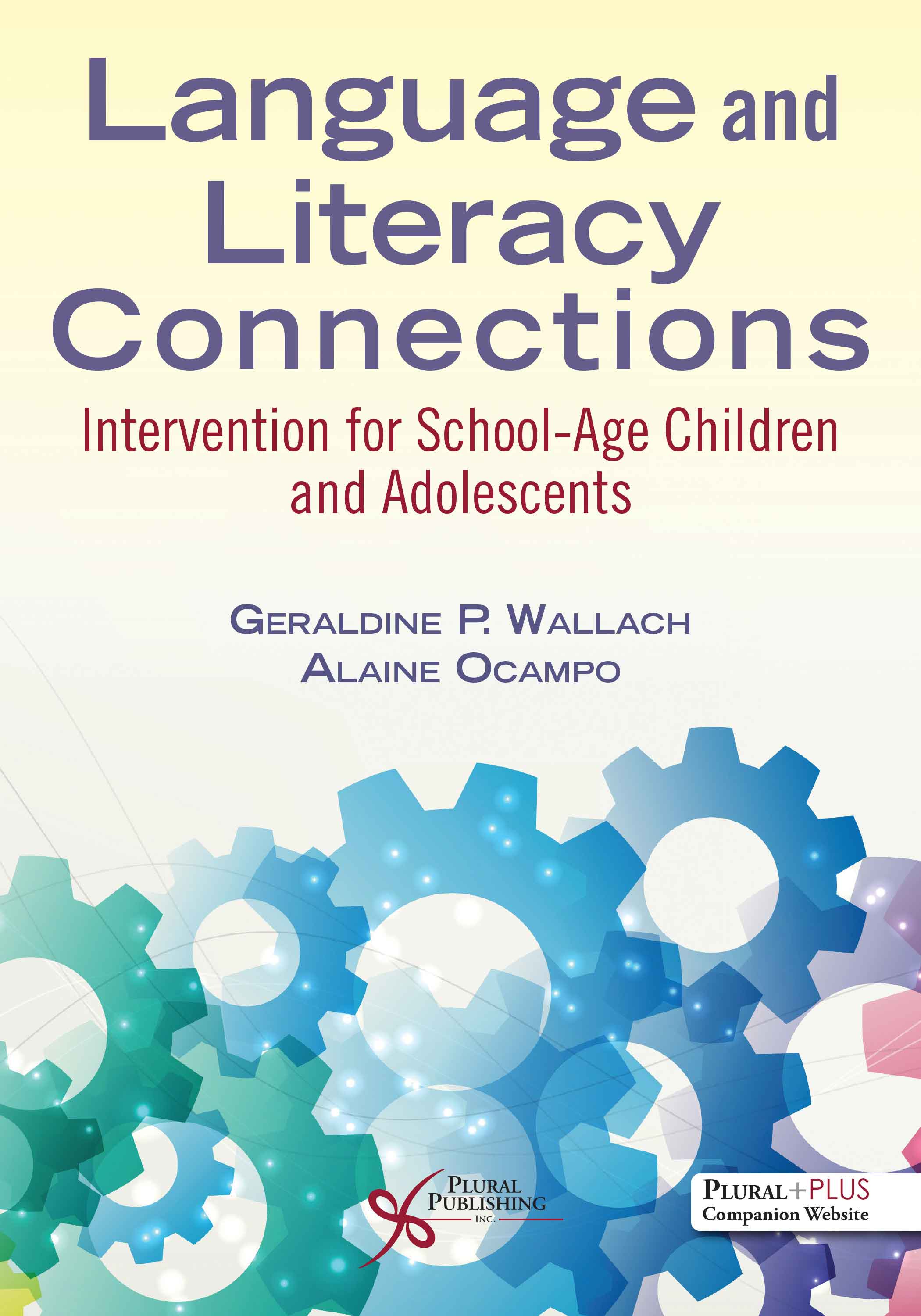
Language and Literacy Connections: Intervention for School-Age Children and Adolescents.
First Edition
Geraldine P. Wallach, Alaine Ocampo
Details: 358 pages, B&W, Softcover, 7" x 10"
ISBN13: 978-1-63550-213-8
© 2022 | Available
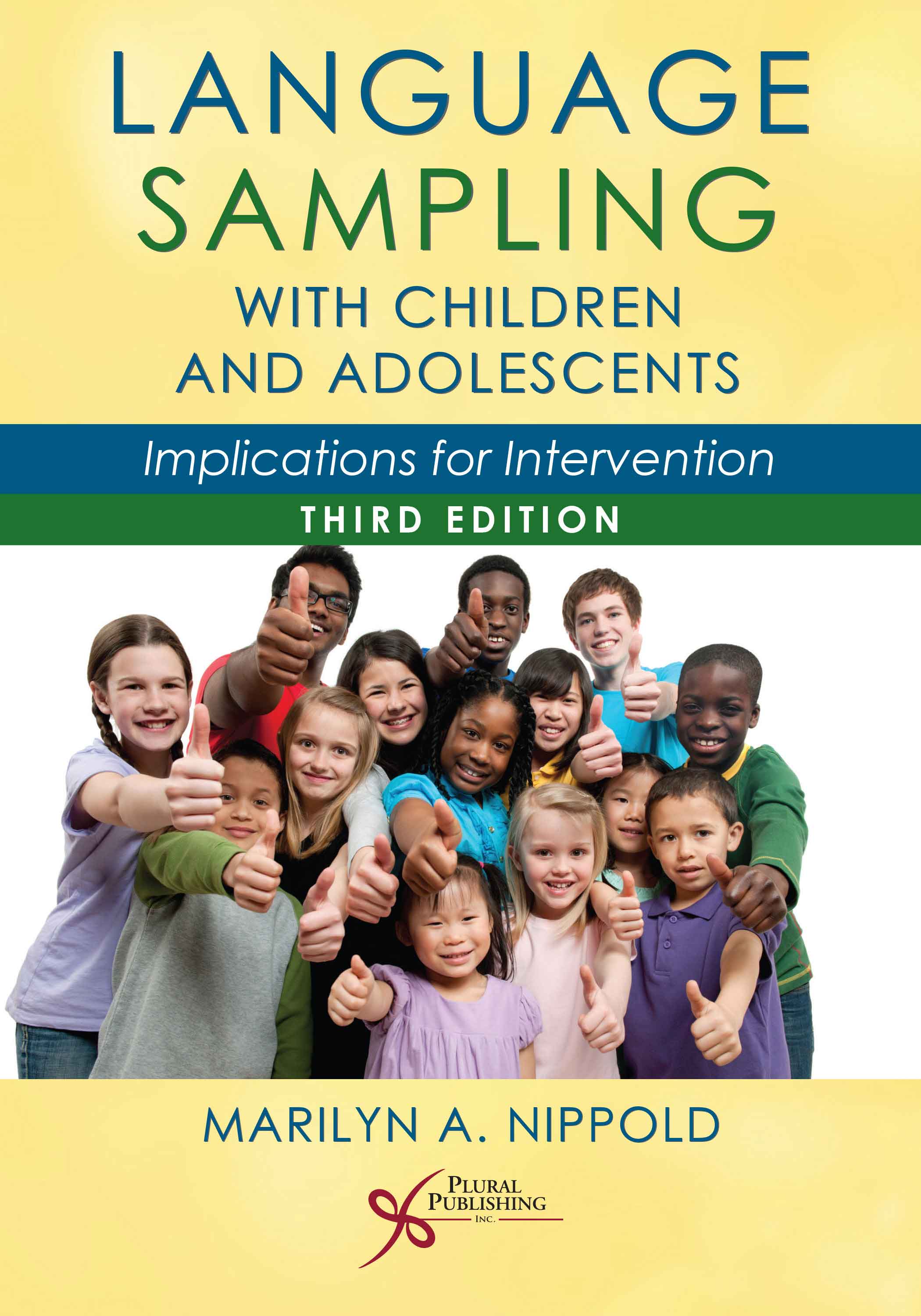
Language Sampling With Children and Adolescents: Implications for Intervention
Third Edition
Marilyn A. Nippold
Details: 437 pages, B&W, Softcover, 7" x 10"
ISBN13: 978-1-63550-276-3
© 2021 | Available
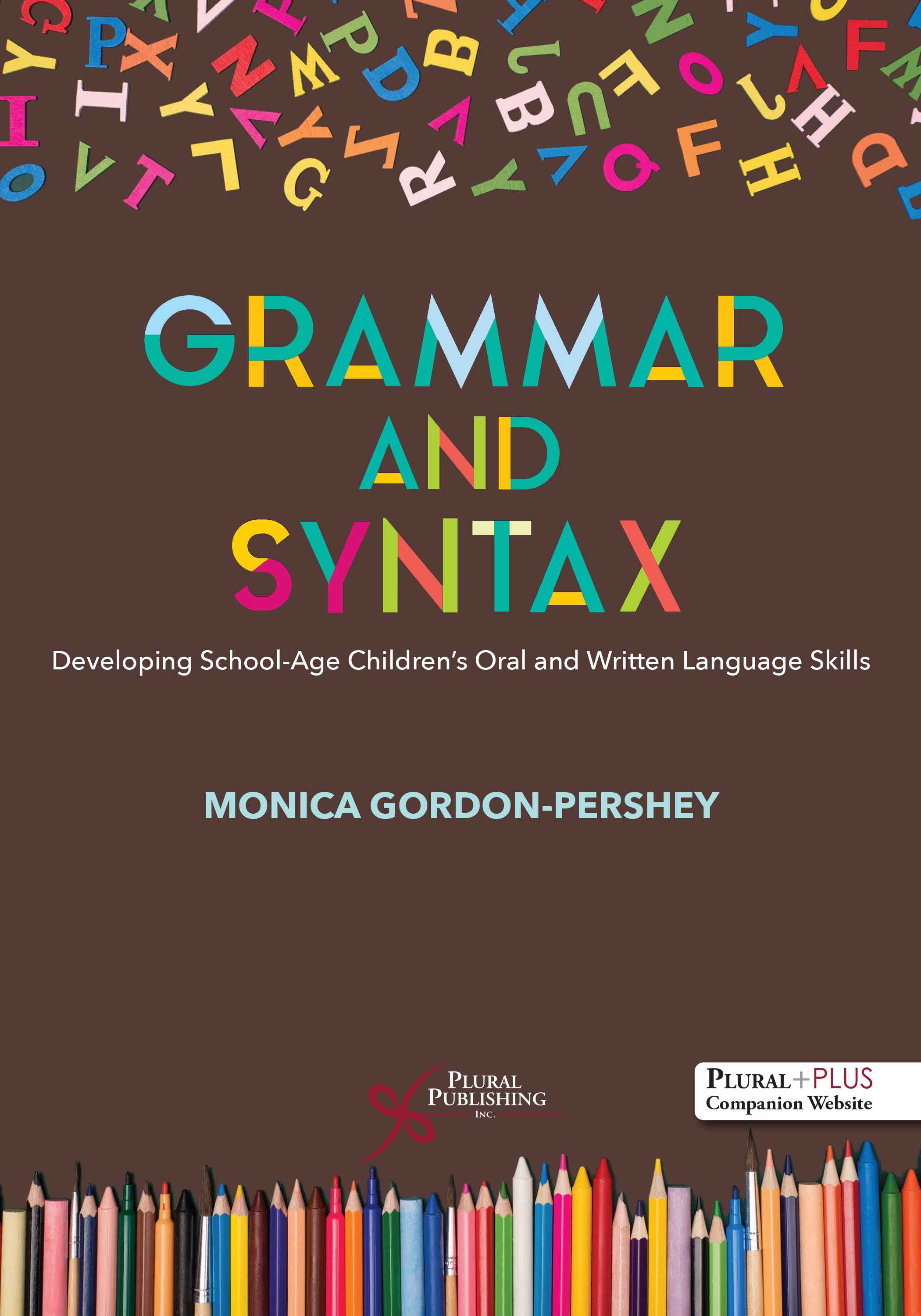
Grammar and Syntax: Developing School-Age Children's Oral and Written Language Skills
First Edition
Monica Gordon-Pershey
Details: 383 pages, B&W, Softcover, 7" x 10"
ISBN13: 978-1-94488-355-3
© 2022 | Available
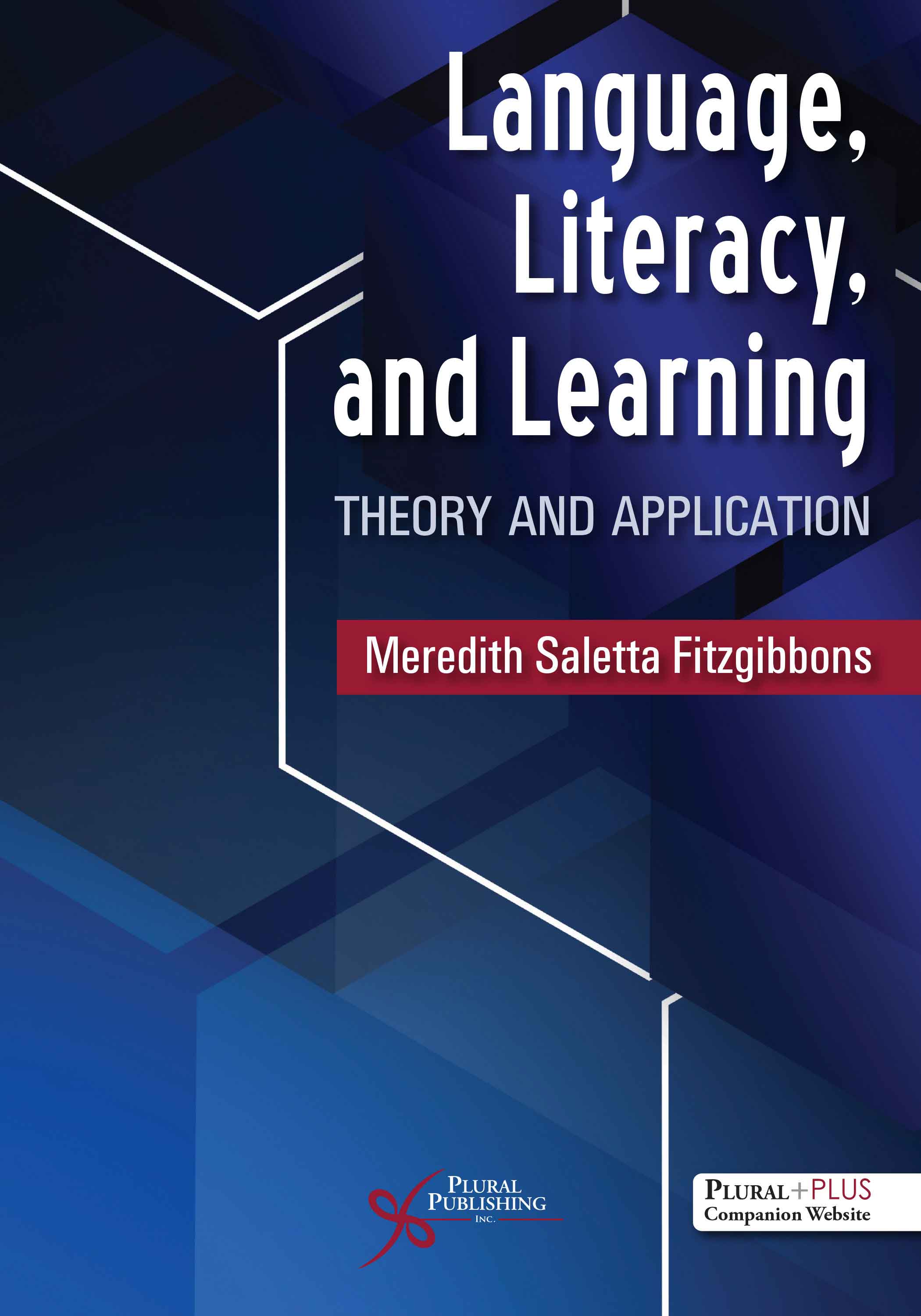
Language, Literacy, and Learning: Theory and Application
First Edition
Meredith Saletta Fitzgibbons
Details: 329 pages, B&W, Softcover, 7" x 10"
ISBN13: 978-1-63550-361-6
© 2024 | Available
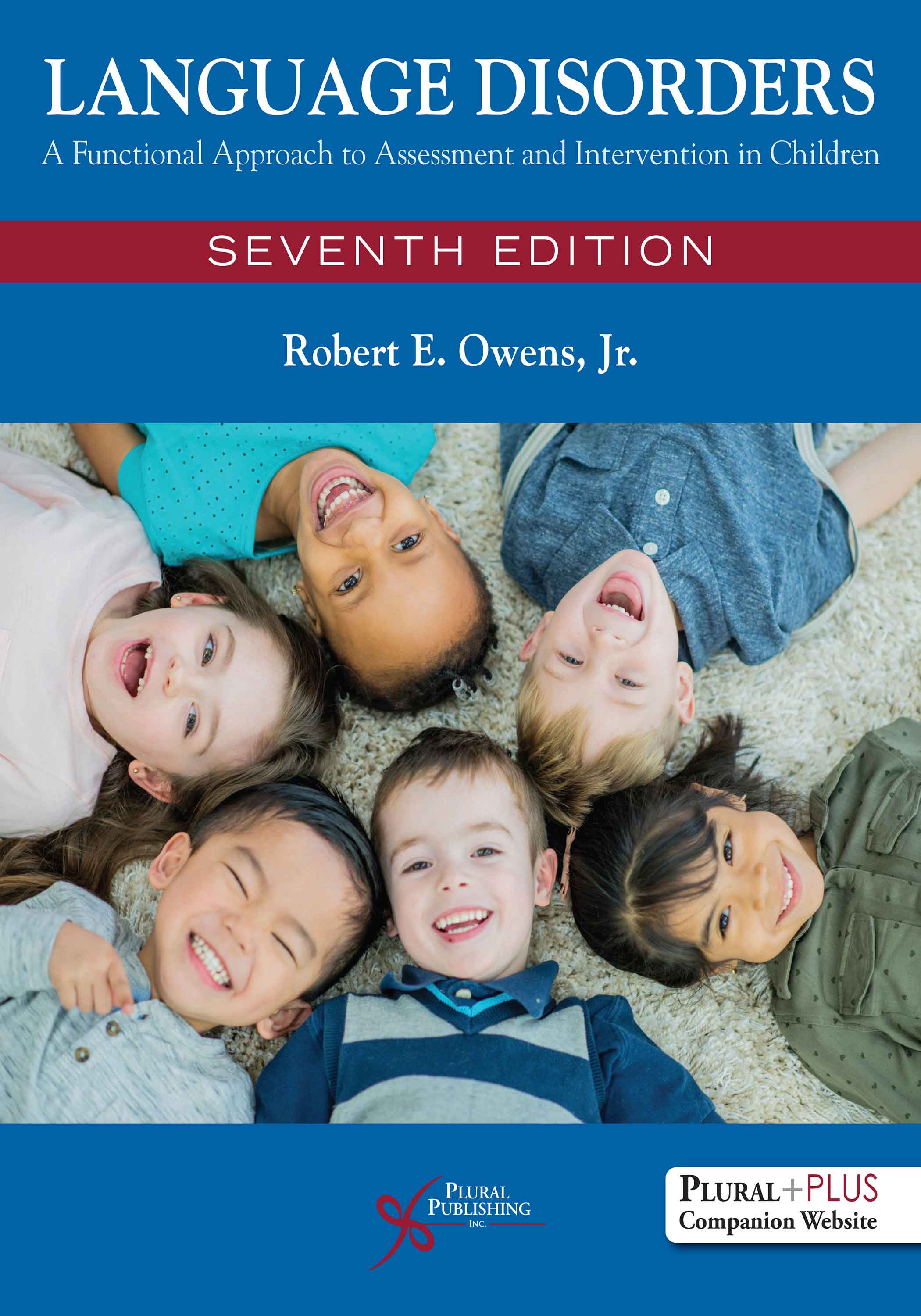
Language Disorders: A Functional Approach to Assessment and Intervention in Children
Seventh Edition
Robert E. Owens, Jr.
Details: 759 pages, 2-Color, Softcover, 8.5" x 11"
ISBN13: 978-1-63550-413-2
© 2024 | Available
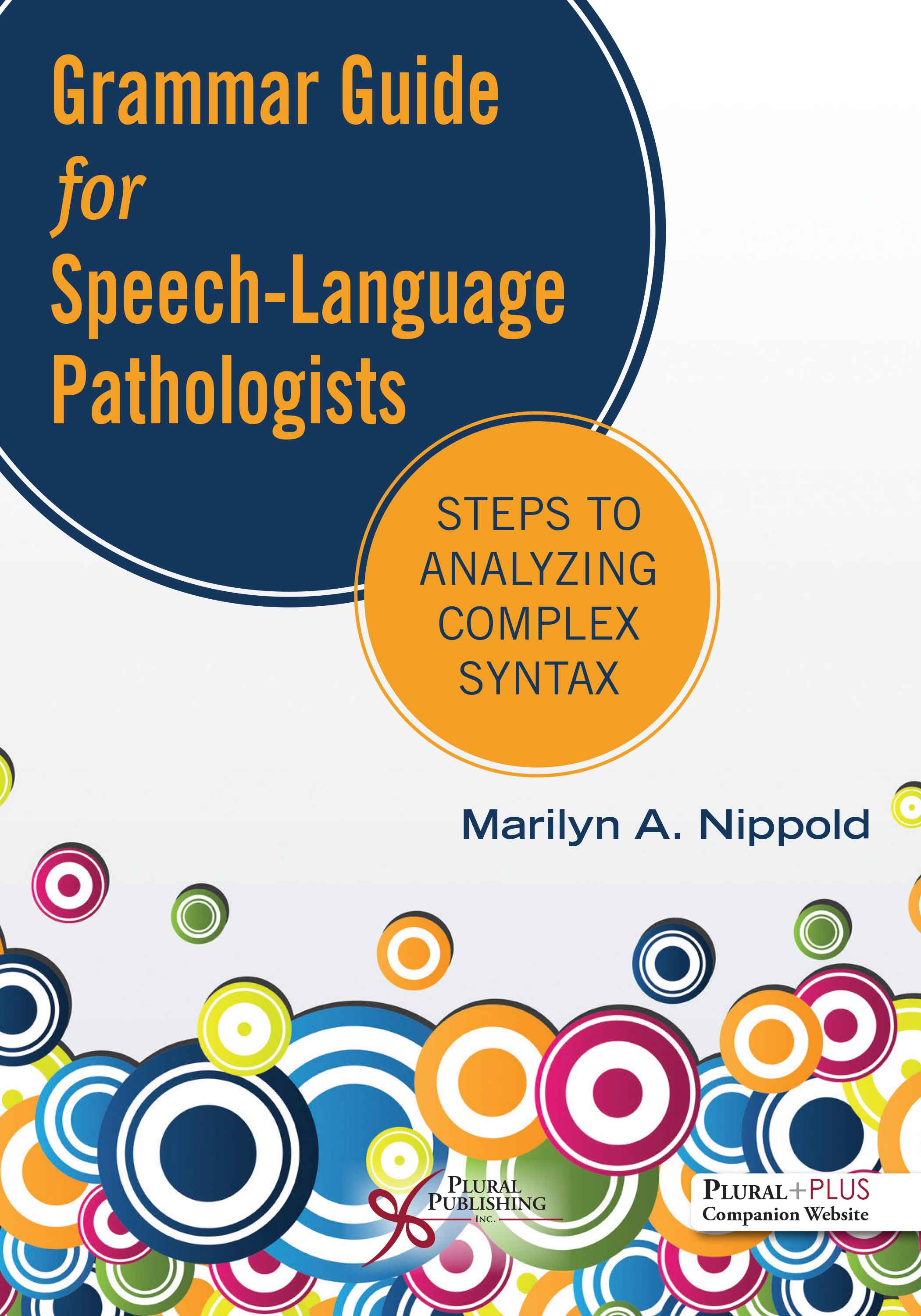
Grammar Guide for Speech-Language Pathologists: Steps to Analyzing Complex Syntax
First Edition
Marilyn A. Nippold
Details: 251 pages, B&W, Softcover, 7" x 10"
ISBN13: 978-1-63550-393-7
© 2023 | Available
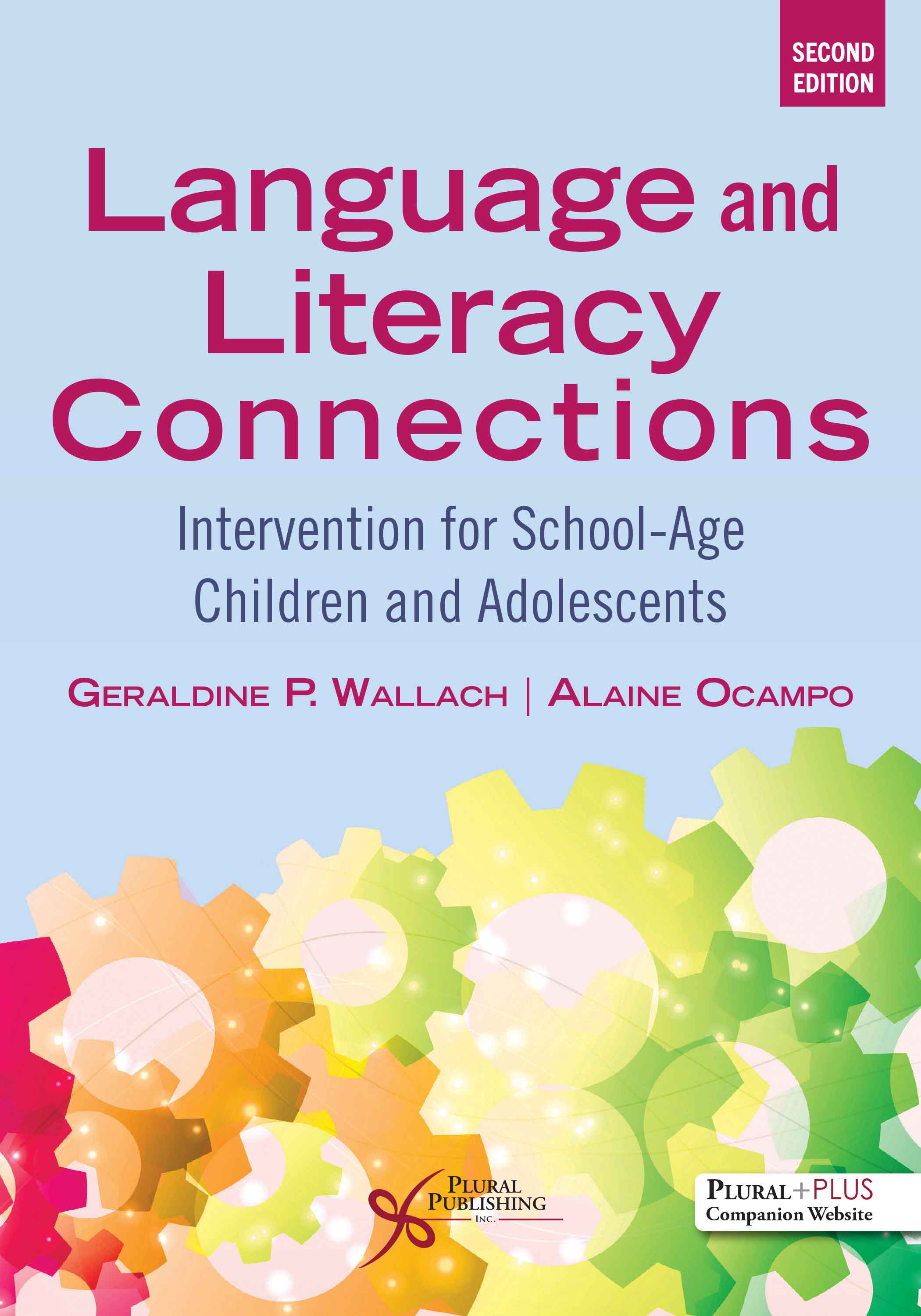
Language and Literacy Connections: Intervention for School-Age Children and Adolescents
Second Edition
Geraldine P. Wallach, Alaine Ocampo
Details: 360 pages, B&W, Softcover, 7" x 10"
ISBN13: 978-1-63550-730-0
© 2026 | Coming Soon
Release Date: 07/01/2025

